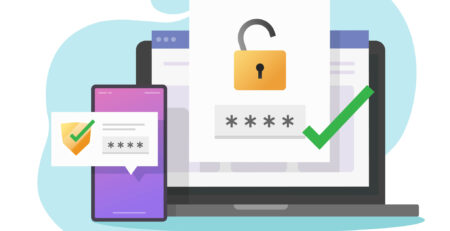Essential Steps for Ensuring Network and Endpoint Security
In today’s digital age, network and endpoint security are paramount for small businesses. Cyber threats are evolving, and small businesses are often targeted due to perceived vulnerabilities. As an IT-managed service provider in Southern California, it’s crucial to educate your clients on the essential steps to safeguard their networks and endpoints. This article outlines key strategies to enhance security and protect sensitive data.
1. Conduct Regular Security Audits
Regular security audits are the foundation of a robust security strategy. These audits help identify vulnerabilities and ensure compliance with industry standards. By conducting thorough assessments, businesses can pinpoint weaknesses in their network and endpoint security, allowing for timely remediation.
2. Implement Strong Password Policies
Weak passwords are a common entry point for cybercriminals. Encourage your clients to implement strong password policies, requiring complex passwords that are regularly updated. Multi-factor authentication (MFA) adds an extra layer of security, making it significantly harder for unauthorized users to gain access.
3. Keep Software and Systems Updated
Outdated software and systems are vulnerable to exploits. Ensure that all software, including operating systems and applications, are regularly updated with the latest security patches. Automated updates can help streamline this process and reduce the risk of human error.
4. Use Advanced Endpoint Protection
Endpoint protection solutions are essential for safeguarding devices such as laptops, smartphones, and tablets. Advanced endpoint protection software can detect and mitigate threats in real-time, providing a critical defense against malware, ransomware, and other cyber threats.
5. Educate Employees on Cybersecurity Best Practices
Human error is a significant factor in many security breaches. Regular training sessions on cybersecurity best practices can empower employees to recognize and avoid potential threats. Topics should include phishing awareness, safe browsing habits, and the importance of reporting suspicious activities.
6. Implement Network Segmentation
Network segmentation involves dividing a network into smaller, isolated segments. This approach limits the spread of malware and restricts unauthorized access to sensitive data. By segmenting the network, businesses can contain potential breaches and minimize their impact.
7. Utilize Firewalls and Intrusion Detection Systems
Firewalls and intrusion detection systems (IDS) are critical components of network security. Firewalls act as a barrier between trusted and untrusted networks, while IDS monitor network traffic for suspicious activity. Together, they provide a robust defense against external threats.
8. Backup Data Regularly
Regular data backups are essential for disaster recovery. In the event of a ransomware attack or data breach, having up-to-date backups ensures that critical information can be restored quickly. Encourage your clients to implement automated backup solutions and store backups in secure, offsite locations.
9. Monitor Network Traffic
Continuous monitoring of network traffic can help detect anomalies and potential threats. Network monitoring tools provide real-time insights into network activity, allowing for swift identification and response to suspicious behavior. This proactive approach can prevent minor issues from escalating into major security incidents.
10. Develop an Incident Response Plan
An incident response plan outlines the steps to take in the event of a security breach. This plan should include procedures for identifying, containing, and mitigating the impact of a breach. Regularly reviewing and updating the incident response plan ensures that businesses are prepared to handle security incidents effectively.
_______________________________________________________________________________________________________________________________________
Ensuring network and endpoint security is a continuous process that requires vigilance and proactive measures. By implementing these essential steps, small businesses can significantly reduce their risk of cyber threats and protect their valuable data. As an IT-managed service provider, your role in guiding and supporting your clients through these security measures is crucial for their long-term success.











Leave a Reply